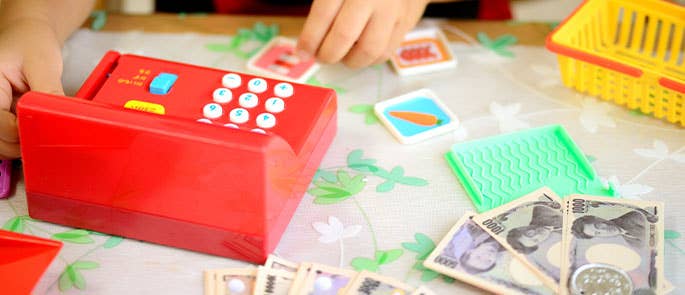The Importance of Financial Literacy in Schools
Financial literacy is a critical life skill for everyone and is something we should all be taught from a young age. As a teacher, you are well-placed to help children learn essential, lifelong money skills, from budgeting and saving, to interest rates and avoiding debt. In this article, we’ll look at what financial literacy is, why it’s important to teach students financial literacy as part of the curriculum and provide some strategies and tips for how to teach financial literacy in the classroom.
What is Financial Literacy for Students?
Financial literacy for students is about having the knowledge and skills to make informed financial decisions. It includes children understanding important financial concepts and principles so that they can go on to manage their money well for the rest of their lives.
Financial education in schools gives children and young people the power to make the most of their money and plan for their future. It’s widely accepted that children’s attitudes to money are usually developed by the age of 7 so, as a teacher, you are well-placed to help the children in your care develop the lifelong money skills they need.
In primary schools, financial literacy includes topics like; recognising how money is used, making simple calculations with money, calculating change, budgeting, saving money, planning ahead, keeping money safe, comparing costs and understanding the use of bank cards.
In secondary schools, financial literacy is more about the functions and uses of money, covering topics such as; credit and debit, insurance, pensions, savings, debt, interest rates, personal finance products, currencies and exchange rates, value for money, managing a household budget and more complex calculations.

Why Financial Literacy is Important for Students
Financial literacy is important for students because it supports lifelong wellbeing and success. The many benefits of students learning financial literacy in schools include:
- The ability to open a bank account.
- Encouragement of responsible spending and making informed choices.
- The ability to save for the future.
- Understanding of how to avoid and manage debt.
- Recognition of the importance of having a pension.
- Confidence to manage an income from paid work.
- Understanding of how tax works.
- Lower stress levels through better financial stability.
- Knowledge of how to avoid financial exploitation, fraud or abuse.
How to Teach Financial Literacy
Whether you’re teaching financial literacy to secondary school students or pre-schoolers, financial literacy topics can easily be incorporated into personal development or citizenship lessons, such as PSHE. They can also be used to bring other areas of the curriculum into the real world for your students. For example, using maths lessons to calculate change or work out interest rates makes the subject more relevant to real life.

In the UK, there are different curriculum requirements for financial education depending on where your school is. As a general guide:
- In England, financial education is included in the curriculum for secondary schools only as part of citizenship and maths lessons. It covers budgeting, credit and debt, insurance, savings and pensions. Financial education isn’t compulsory in primary schools but the maths curriculum does include some learning about money.
- In Scotland, ‘financial capability’ is included in the curriculum for pupils aged 3 to 14 years and is mainly covered in maths and numeracy lessons.
- In Wales, elements of financial education are covered in subjects such as maths and health and wellbeing, and are taught to both primary and secondary school students.
- In Northern Ireland, ‘financial capability’ is included in the curriculum for pupils aged 4 to 14, primarily through maths and numeracy lessons.
The UK’s Money and Pensions Service (MaPS) provides some key themes that have been shown to build financial capability amongst children. These themes can be used to help shape your lessons on financial literacy:
- Start teaching financial literacy at a young age – children as young as pre-schoolers will benefit from financial education and evidence shows that children’s attitudes to money are well-developed by the time they turn 7.
- Translate lessons into real-life – by putting learning into practice, financial education will be more effective. For example, use workshops to support children to open a bank account or set them homework around managing a budget for the weekend.
- Involve grown ups in financial education – lessons will be more successful when parents and carers are invited to join in, whether that’s in-school with meetings and workshops or at home doing homework with their children. Parental involvement helps to influence a child’s mindset and behaviour around money.

Financial Literacy Activities for Students
There are many ways you can incorporate financial education activities into your lessons and they don’t need to be complicated. Below are a few ideas for fun financial literacy activities that you can adopt for your students, whatever their age:
- Create a pocket money savings plan for an item they really want to buy. There are various templates available online or you could design your own.
- Give each child an imaginary amount of money for the food shop, then ask them to work out what they can afford to buy from a list of groceries, plus how much change they’ll have at the end.
- Print off a money bingo card from the internet and play as a class.
- Split the class into small groups and let them play financial board games, like Monopoly, Payday or The Game of Life, that require students to manage their own money.
- Create a fake bank statement and ask the students to identify key information from it, such as adding up total outgoings in a particular category, finding direct debits or spotting fraudulent transactions.
- Explore how money can affect feelings – how do students feel in a range of money-related scenarios? What can they do to manage these emotions?
- Plan an imaginary holiday and calculate exchange rates using a foreign currency. Have the students identify which souvenirs they can and cannot afford.
- Give each student an example payslip and get them to check whether the information on it is correct, including tax deductions and pension savings.
- Search for online money games to play in computer-based lessons – most UK banks and money providers have a range of financial literacy games and activities for children on their websites.
Financial literacy in schools is an important topic that can set students up for life with the money skills they need for success. Teaching financial literacy doesn’t need to be complicated and you can easily adapt existing lessons by introducing fun activities that ensure financial literacy becomes a key part of the curriculum.
Further Resources:
- CPD Courses for Teaching and Education
- What is Media Literacy and Why is it Important?
- What is Visual Literacy?
- Social Skills in Children
- What is Effective Teaching?











